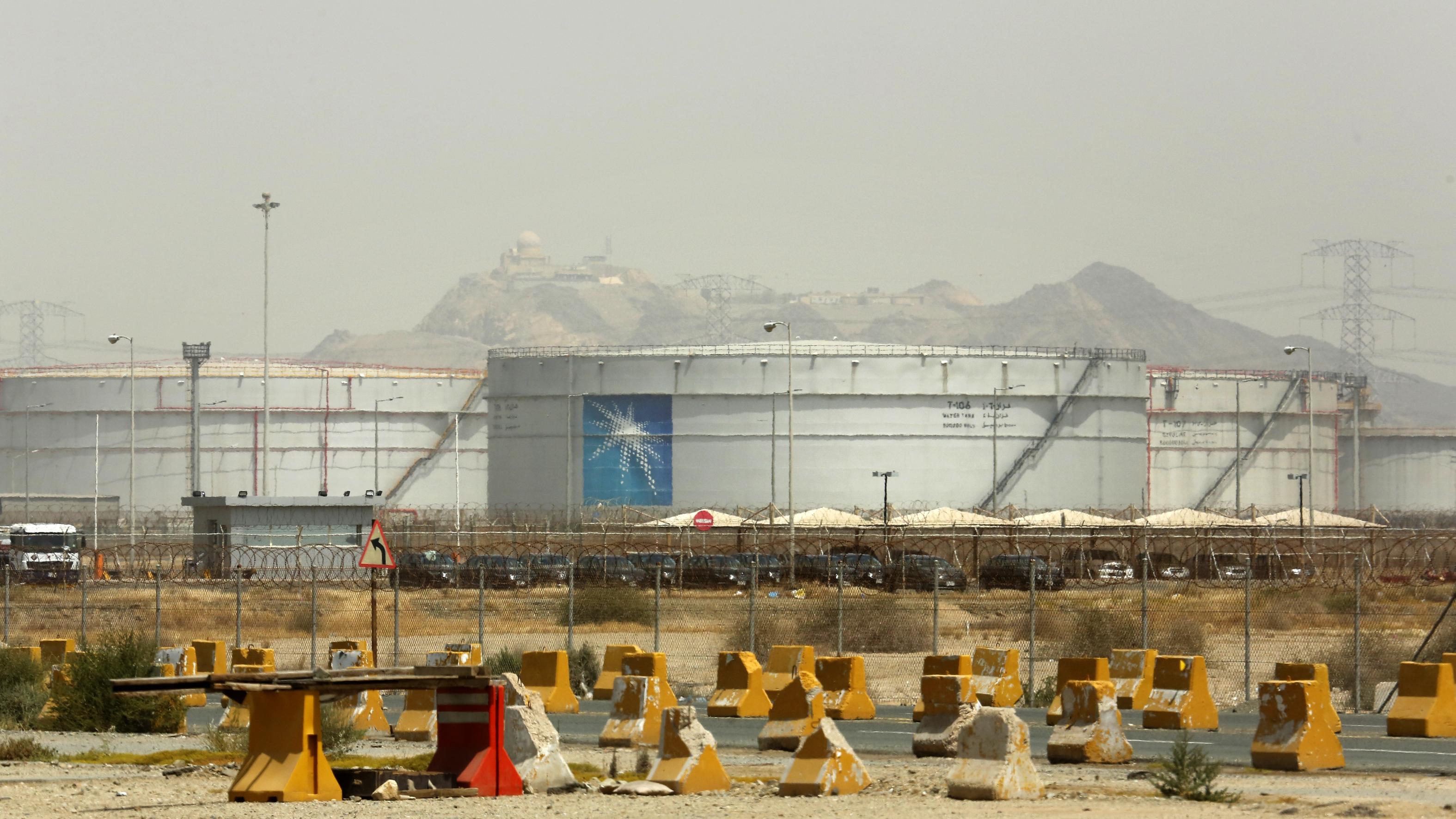 This picture shows Aramco tower at the King Abdullah Financial District (KAFD) in Riyadh on April 16, 2023. (PHOTO / AFP)
This picture shows Aramco tower at the King Abdullah Financial District (KAFD) in Riyadh on April 16, 2023. (PHOTO / AFP)
DUBAI - Saudi Aramco on Tuesday reported a 23 percent fall in third-quarter net profit on the back of lower oil prices and volumes sold, marginally beating analyst estimates and helping prop up its shares in early trade.
Net profit fell to $32.6 billion for the quarter to Sept 30, above the $31.8 billion expected by 12 analysts in a company-provided forecast.
The Saudi oil producer said lower oil prices and volumes were partially offset by a reduction in production royalties.
The group's shares, up about 15 percent this year, edged up 0.6 percent to 33.65 riyals by 0900 GMT.
Aramco's reported its revenue fell to $113.09 billion in the third quarter from $144.99 billion a year earlier, while royalty and other tax payments fell to $14.7 billion from $24.3 billion
Chevron and Exxon Mobil last month reported sharp year-on-year falls in third-quarter profit as energy prices cooled.
Saudi Arabia, the world's top oil exporer and de facto leader of the OPEC group of oil-producing nations, said on Sunday it would continue with its voluntary oil output cut of 1 million barrels per day (bpd) until the end of the year. It said it would review the decision again next month.
Aramco's reported its revenue fell to $113.09 billion in the quarter from $144.99 billion a year earlier, while royalty and other tax payments fell to $14.7 billion from $24.3 billion.
ALSO READ: S. Korea's Hyundai, Saudi Aramco ink $2.4b gas plant deal
It declared a quarterly $19.5 billion base dividend, which is paid regardless of performance. A second $9.87 billion distribution of performance-linked dividends will be paid out in the fourth quarter, based on 2022 and the first nine months of 2023.
The Saudi state remains overwhelmingly Aramco's biggest shareholder, and heavily relies on its generous payouts.
 In this file photo dated March 21, 2021, storage tanks are seen at the North Jiddah bulk plant, an Aramco oil facility, in Jiddah, Saudi Arabia. (PHOTO / AP)
In this file photo dated March 21, 2021, storage tanks are seen at the North Jiddah bulk plant, an Aramco oil facility, in Jiddah, Saudi Arabia. (PHOTO / AP)
The government directly holds 90.19 percent, the sovereign Public Investment Fund (PIF) 4 percent and PIF subsidiary Sanabil another 4 percent, according to LSEG data.
Saudi Arabia last week reported a budget deficit of about $9.5 billion in the third quarter. That compared with a budget surplus of almost $30 billion in the whole of 2022.
Saudi Arabia is midway through an economic transformation plan known as Vision 2030, targeting private sector expansion and non-oil growth.
"Energy demand is likely to increase over the mid- to long-term," Aramco said, adding it continued to invest "through the largest capital program in its history."
The company said its capital expenditure in the quarter rose to $11 billion from $9 billion a year earlier, but RBC said in a note that Aramco narrowed its 2023 capex forecast to $48 billion to $52 billion from an earlier $45 billion-$55 billion range.
Aramco's initial public offering in late 2019 was the world's largest, raising $25.6 billion, with more shares later boosting the haul to $29.4 billion.
The company is considering selling a stake worth as much as $50 billion through a secondary share offering on the Riyadh bourse, the Wall Street Journal reported in September.
READ MORE: Report: Saudi Aramco considers selling $50 billion in shares
Back in 2021, Saudi Arabia's de facto ruler, Crown Prince Mohammed bin Salman, said that Saudi Aramco would sell more shares, with the proceeds going to bolster the PIF, the Vision 2030's main funding source.


